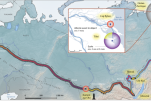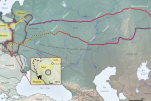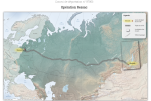European Memories
of the Gulag
CartoGraphy


JOURNEYS INTO EXILE
Close
Journeys across the WORLD
For many of these women and men, their deportation began a story of movement across the world, in addition to the endless crossing of the Soviet Union to where they were resettled or imprisoned. The he violence of Nazis and Stalinists was, for some of them, the starting point for journeys across the world after being released from relegation. These journeys across the world need to be represented on two maps, with different scales and projections.
Close
« Ice children »
The ‘ice children’ crisscrossed the Soviet Union from North to South, East to West. While still children, they were sent on endless journeys by train, lorry and barge to the farthest points of Soviet territory. The children’s journeys had two legs, first deportation to the Altai, and then north of the Arctic Circle.
Close
Departure but not return
Some of the resettlers neither returned to their homeland nor set out for distant places. They decided voluntarily or under pressure to stay: they were firmly established in their resettlement location, had found a spouse or a position of responsibility, failed to settle back home, had money problems, etc. They were a minority (hard even to estimate), but they were to be found in Siberia and Central Asia.
Close
Prisons, camps and ressetlment
Many of these deported women and men spent time in the Gulag. Their journeys were a succession of imprisonments, long distances covered by train or on foot, alternating between camps and special resettlement villages, in harsh natural environments. Some would travel from the terrible cold of the Russian Far North to the searing heat of the steppes of Central Asia.
Close
Deportation trains
The first stage in deportation was the arrival of NKVD internal troops and local auxiliaries to snatch the future exiles from their homes, put them on lorries or wagons to a station and then into goods carriages. A given train comprised people who lived close to each other and often knew each other. After a lengthy journey, the families were taken further by road or river to places that might be close together or far apart.
Close
« Ice children »
The ‘ice children’ crisscrossed the Soviet Union from North to South, East to West. While still children, they were sent on endless journeys by train, lorry and barge to the farthest points of Soviet territory. The children’s journeys had two legs, first deportation to the Altai, and then north of the Arctic Circle.






